Cycling and pregnancy: expert advice on staying active whilst growing a little person
Cycling Weekly's digital editor was never going to spend 40 weeks off the bike...
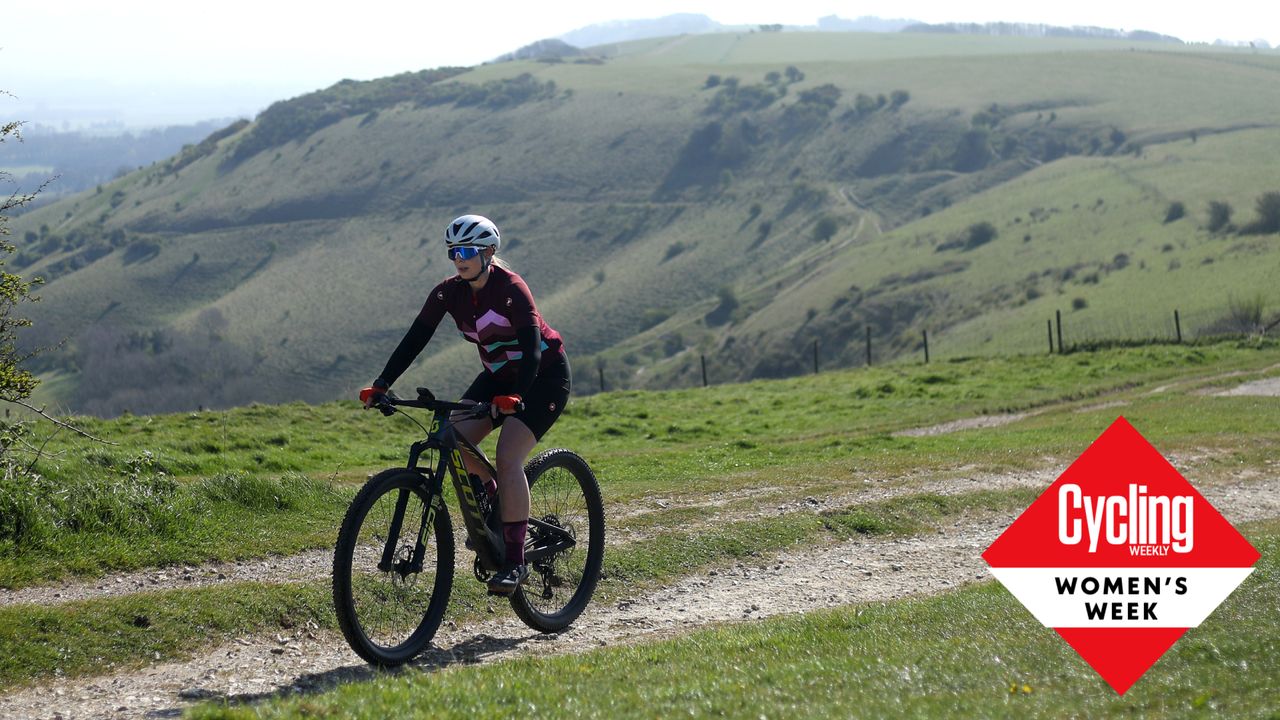

Some women approach pregnancy with eager anticipation. I was never one of those women. Whilst I was excited to start a family, the idea of relinquishing control over my body - to make space for a tiny but rapidly growing little person - induced a fear that niggled at the back of my mind throughout my twenties.
Thirty-nine weeks into the event, I wish I’d given over less of my time and energy to these worries (a sentiment I doubly endorse as I carry out a final edit, with my gorgeous daughter sleeping next to me!).
Whilst it's important to acknowledge that pregnancy can be extremely challenging for some women, I'm also keen to reassure mums-to-be that choosing to have a baby doesn't have to spell a 38 to 42-week residency on the sofa.
Every pregnancy is unique. But the answer to the question “will I be able to keep enjoying the benefits of riding a bike, stay active, and keep cycling during pregnancy?” has, for me, been a resounding yes.
What exercise is 'safe' during pregnancy?
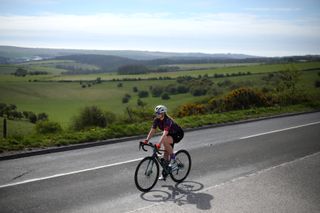
Every expert I spoke to was adamant that exercise is safe and advised in an uncomplicated pregnancy. Reasons for extra caution would include carrying more than one baby, excessive vomiting or high blood pressure - your doctor or midwife should advise if you display any contraindications making exercise a risk.
“We need to be respectful of the fact that yes, we’re carrying a baby, but at the same time, it is not a time of illness. We should be confident in our bodies”, reassures Dr Sarah Rollins, who worked as a consultant to devise the guidelines used by the Ministry of Defence’s (MOD) personal trainers, when coaching women during pregnancy.
“Staying active is good for you, it’s good for the baby, and it’s good for the mind,” she told me.
Get The Leadout Newsletter
The latest race content, interviews, features, reviews and expert buying guides, direct to your inbox!
Whilst exercise during pregnancy is repeatedly advocated by the UK National Health Service (NHS), advice that people should “always be able to talk during exercise” and avoid “becoming exhausted” is not entirely athlete-friendly, leaving me - an amateur but enthusiastic racer - exasperated and asking “how long a conversation?” and “what exactly is the ‘training stress score’ for exhaustion?”
I wanted a concrete number. In years gone by, that number has been as low as 140 beats per minute; thankfully, science has moved past the dark ages of blanket figures. Female athlete lead at Orreco health, Georgie Buinvels, gave me the figure of “85% of your maximum heart rate”, as the threshold you “shouldn’t ideally go above.”
"We need to be having a regular bloodstream going to the placenta and then to the foetus," explained the research scientist behind the Fitr woman cycle tracking app, adding "when you exercise too hard, it is potentially compromising the amount of nutrients and oxygen that is delivered to the developing foetus."
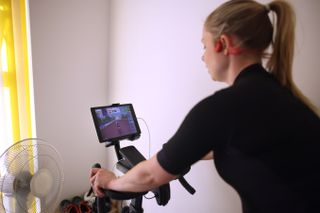
I only heard this advice eight weeks into my first trimester. Having completed several harder sessions, initially, the guideline sent me hurtling into my first "mum guilt" panic spiral. This advice shouldn't be a source of fear for mums in a similar situation - plenty of expectant women exercise unaware of their little stowaway for a couple of months. Rollins’ take was much less numerical.
“You want to avoid hyperthermia - so getting too hot - and dehydration. People might use heart rate as a surrogate measure of how hard you’re working, and, therefore it’s suggested that you steer clear of the very high heart rates, to avoid getting too hot," she outlined.
“But actually, if you are exercising in a dry environment and you are not overstraining, and it's cool, then the risk to the embryo is very low as you’re going to be able to - as any other human being - dissipate heat,” she explained, adding that prioritising ventilation - particularly when cycling indoors - is important.
What causes a drop off in physical capability during pregnancy?
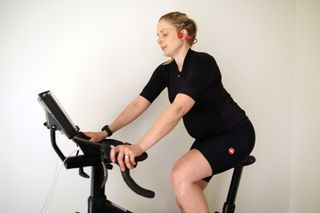
“Listen to your body” is a piece of advice that pregnant athletes will become very used to hearing. Initially, I found this directive vague and frustrating. But it soon became apparent that the human body is really quite clever.
I certainly couldn’t have hit my pre-pregnancy max of 200bpm, and I can’t say I ever wanted too, either. Zwift's tailor-made 'Baby on Board' workouts were perfect for keeping me motivated without causing me to overreach, despite a significant reduction in my functional threshold power.
There are a number of factors that contribute to the drop-off in physical capacity that many women see from the early weeks of pregnancy; a huge increase in blood volume - up to 50% by the end of the pregnancy - is one of them.
“You’re not actually anaemic, but you’re getting relatively anaemic because your blood is becoming dilute,” Rollins explains. “This increase in water means you get this relative apparent loss of red blood cells,” you know - the handy ones that carry oxygen around our bodies to help us hit high intensities.
“The placenta is [also] saying ‘right, you’ve got to supply me with the right oxygen, the right nutrients'. That happens very early on and will change the way you feel, in terms of your ability,” Rollins says.
These changes create a handy ‘self-limiting’ hack, the high intensities it’s advised we avoid are harder to hit, as Rolling outlines, “we want to be working in that 70-80% zone, so that you can develop endurance, but you’re not leaving everything on the floor in the last session, and it’s perfectly safe to be working in those zones and getting exercise benefits.”
A post shared by Michelle Arthurs-Brennan (@ridewriterepeat)
A photo posted by on
And cutting out high intensities needn't be daunting, “you can rest assured that you’re going to pop out the pregnancy with some really great physiological adaptations that will probably counteract the lack of high-end stuff that you're going to be doing,” she confirmed.
That was certainly the experience Trek-Segafredo pro Lizzie Deignan shared with me, when reflecting upon her return to fitness after having her daughter, in 2019. “I had Orla on September 23 and I didn’t do any training as such until December. I was just riding my bike. But I was shocked how fast I got fit. It really surprised me, it really comes back quickly.
“I’m actually someone who quite enjoys the process of detraining, and letting my body take over, and the baby being in charge. I kind of trust the process of letting it go,” said Deignan, sharing a refreshing perspective from an athlete with higher expectations on her shoulders than most could ever dream of.
Pregnancy symptoms and exercise
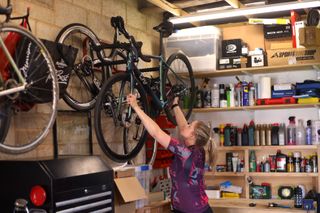
Advocating exercise during pregnancy is all well and good, but what if symptoms make activity undesirable, or, impossible?
Google seemingly any ailment alongside “and pregnancy” and you’ll get the same infuriating answer: “[insert name of symptom] is caused by hormonal changes”. The ability for such wide-ranging afflictions to be attributed to changing hormones would be laughable if it didn't feel so nauseatingly unfair. And they hit from the first trimester.
“With my daughter, I definitely had nausea for the first 12 weeks, and some tiredness,” Deignan remembered, speaking 20 weeks into her second pregnancy. “This time I had nausea for 18 weeks and I was just completely floored by fatigue. I got much bigger, much quicker. Things like riding my bike have been much harder this time round,” she said.
For the 33-year-old, adjusting her diet has been the answer. “Eating crisps, eating chips, anything salty and fatty [has helped]”, she tells me. “It wasn't a time for me sticking to any kind of nutritional plan, it was all about being flexible and doing what I could to get through the day, to be honest,” she adds.
For me - like many women - carbs were key to banishing sickness. “We do know that the body relies a little bit more on carbohydrates, from the first trimester” explains Bruinvels. “Your body is changing fuel systems, and hormones are partly driving this. Consuming enough carbohydrates and spreading that out through the day to try and keep energy levels more constant and consistent [is important].”
Fatigue is another very common first-trimester symptom, and Bruinvels puts that one down to an increase in progesterone. Unfortunately, in tandem, sleep can also be affected. From the early weeks of pregnancy until around week 38 (when I could sleep for England!), my Garmin Fenix 7 rated my sleep quality as “poor”, regardless of the hours I put in.
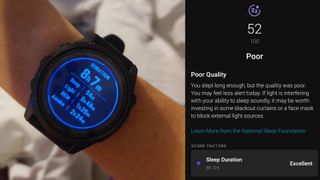
It's not the curtains, Garmin
“We know that oestrogen can actually cause a swelling of the mucosal lining in your nasal passages [and] your breathing is more likely to be affected at night,” explains Bruinvels, also listing restless legs, a need to go to the toilet in the night, lower back pain and other factors as potential sleep inhibitors.
My only reliable cure for fatigue was exercise. Bruinvels put this down to "[the] massive release of endorphins that can occur with exercise.” But this won't be the answer for every body in every instance; flexibility is fundamental.
“Exercise should be approached through pregnancy based on [asking yourself] ‘how are you feeling?’'” Bruinvels said, advising moving or skipping workouts on days where the answer is ‘not good’.
During her first pregnancy, Deignan told me she was training around 10 hours a week - approximately a 50% reduction on her normal volume at the time. “[That volume has] just not been possible for me this time round,” she confirmed.
“I know my body and I’m very sensitive to how I feel, so I trust my own instincts,” the Paris-Roubaix winner said, adding: "It’s really not a good idea to try and set goals, because you may feel great one week and completely floored the next. You just have to completely be flexible, listen to your body and take it day by day."
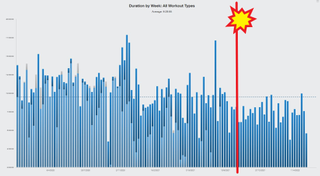
Training from 2020 (the 'disciplined' year), to 2021 (the 'house move' year) and 2022 (the 'pregnant' year). The 'star' marks a positive pregnancy test.
Pre-pregnancy, I trained anywhere from nine to 14 hours a week, depending upon the time of year and work stresses. Up until 38 weeks, I stuck pretty consistently to about seven hours, with a few higher volume exceptions in the second trimester. Doing less just left me feeling more fatigued - until the final weeks, when my energy levels were best likened to a broken tap: all on, or all off. In week 41, I did 5.5 hours of exercise, the final run being on the day I gave birth (it was more of a plod with ample walking breaks, and largely born of a desire to kick things off!).
What you'll want to do, however, is unique to you. As Deignan put it, "every pregnancy and every woman is different, it's just pointless comparing."
Emergence of 'the bump'
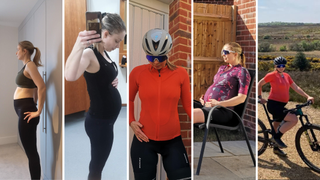
L-R, Week 11, Week 17, Week 23, Week 24, Week 31
As pregnancy progresses, so does the size of the bump, bringing with it several factors which can affect your ability to exercise.
Lying on your back
One common piece of advice is to avoid lying on your back, but physiotherapist at Velophysio Nic Roberts was keen to dissipate some of the anxiety around this directive.
“The weight [of the bump] can put compression onto your aorta. There’s concern of it disturbing blood flow to the baby, but also to yourself,” Roberts explains. "Sometimes the advice can be taken a bit too literally. You would feel unwell, or dizzy if there was something untoward happening. If you’re doing a normal routine, where you might spend two to three minutes on your back, it’s nothing to be concerned with."
Diastasis recti
Another common piece of advice for active women is to avoid the majority of abdominal exercises, with the concern being that this can increase the chance of ‘diastasis recti’, or separation of the abs.
Roberts does suggest that exercises that put a lot of strain through the abs - such as planks and full press ups - should be modified, because those muscles aren't working in their normal pattern. But she’s sceptical that women can do anything to impact the degree of separation that takes place.
“As your abdomen grows, there’s usually a split through the line of your six pack, to allow space for the baby. The degree of how that split happens varies based on your collagen, your genetics, many different factors - and also the size of the baby. So there’s not really a way of avoiding it,” Roberts says. “After the pregnancy, the muscle needs to knit back together. The key really is postpartum, being checked by your midwife or a women’s health physio.”
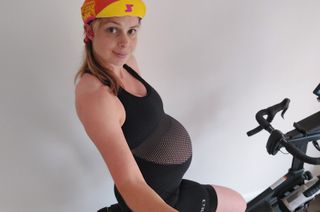
Stages SB20 cycling at 39 weeks
Pelvic girdle pain
More pressing an issue, for me, was pelvic girdle pain (PGP), which refers to any pelvic, hip or groin pain during pregnancy - and is primarily thought to be caused by an increase in the level of the hormone relaxin, which serves the function of facilitating labour.
“If it's severe pain, it’s important to see your doctor, midwife, or a women’s health physiologist. But pelvic girdle pain also covers [less severe] pain in the groin, around the back, or the hips,” Roberts tells.
If the pain is relatively mild, then rest may be the simple answer. “Give your body a chance to catch up,” Roberts says. “Some of the changes that take place in your body during pregnancy happen at different stages and at different speeds. It might be that for two weeks you have to limit your activity, and then you can get back into it,” she says.
Thankfully, this did ring true for me: extremely limiting pain at about 22 weeks receded after a week and had all but disappeared by week 28. However, I did make some modifications to my gym routine to avoid a repeat.
“If you’re getting any discomfort, you should avoid single-legged exercises,” Roberts told me. “When you’re on one leg, the body has to work really hard to stabilise. And when you’ve got a pelvis going through a little bit of destabilisation, it can increase that. The key would be to stick to double leg exercises. And that’s also for day-to-day activities - getting in the car, getting out of bed.”
Wearing a support belt during exercise can also help. The good news is that cycling is often an exercise that can be continued. “Cycling, by virtue of the fact you’re on a saddle and it’s fairly supported, is normally pretty good,” Roberts confirmed.
Pelvic floor health
The pelvic floor is another area of consideration. Roberts, and a former Olympic rower I spoke to, recommended seeing a women's health physio for a pelvic floor exam ahead of the birth.
Whilst the most common advice (which rings true for the majority of people) is to ramp up pelvic floor exercises, when it comes to childbirth, athletes may also need to consider the implications of a tight pelvic floor. This advice is very rarely administered within mainstream health services, so you'll likely need to book a private appointment. The best course of action for each woman will require an expert's assessment.
Many factors - a lot of them out of our control - influence the ease of labour. However, I did check-in with a women's health physio at 36 weeks, and I (and my midwives) believe the advice that I swap all kegel exercises for stretches such as yogi squats and happy baby as well as deep belly breathing exercises made a huge difference to my labour experience, which lasted just under four hours without interventions, allowing for an uncomplicated recovery.
Bike fit and kit
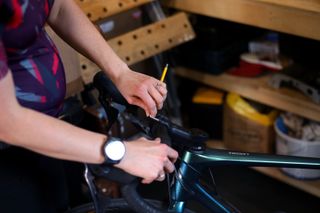
With the growing bump, it’s very likely that you’ll need to adjust your bike fit. The first port of call is flipping the stem and using any spacers available on a road bike.
Having reached the third trimester, I chose to swap onto a Scott Spark mountain bike. This allowed me to keep on riding for periods of up to three hours, across gentle trails, gravel, and the road. Indoors, the Stages SB20 bike was a lifesaver, with infinite adjustability meaning I could find a comfortable position at the flick of a lever.

It's unsurprising that effectively wearing a watermelon strapped to your midriff can affect your centre of gravity and balance, and it’s important not to "bump the bump" as Rollins puts it. Every mother has to make her own assessment as to what she considers safe.
“In the beginning with Orla I rode predominantly indoors until my mental health [meant I] needed to be outside. I’m really a person that needs fresh air. I made my own risk assessments, and I did start to ride outside, in low traffic times, on quiet roads,” Deignan told me.
There's also cycling kit to consider. Veloine is one of few brands that make purpose-designed 'maternity cycling kit'. However, lycra is stretchy. My Giro halterneck shorts did the job from week one to week 40 - sizing up to suit your belly is ill-advised, as the chamois is unlikely to sit right.
The area where I did splash the cash was sports bras. Most women will gain multiple cup sizes, and I gained several by eight weeks; there's no way I could have continued running and cycling without pain in my pre-pregnancy gear, so a fit at Bravissimo - with spendy results - was essential.
Weight gain and being kind to yourself
Of course, pregnancy is going to result in weight gain, and athletes may be more likely to exceed the ‘average’ suggested guidelines.
“[With Orla], in my first 12 weeks, I put on most of the weight and I really slowed down towards the end. I remember thinking in my first pregnancy ‘oh my goodness I'm putting on 300% more than they’re telling me to, what am I going to feel or look like by the end?’, but it's pointless making comparisons”, Deignan said.
My body fat has always been slap bang in the middle of ‘normal’, but I still found that I was consistently a kilo over the 'recommended' curve during the first and second trimesters, before weight gain seemed to slow in the third - at odds with the average pattern.
“As long as you are moving, being healthy, there’s no reason to worry about your weight," Roberts told me. "It’s important to move and exercise, but it’s important not to be obsessive about that exercise, in a way to manage weight.”
Cyclists are not always the best at self-care. But during pregnancy, being considerate to the pressures that this little human’s progression places upon your own body is important. "Bearing in mind that you may be carrying around an extra 10kg or more by the third trimester, simply going about your day might be enough exercise,” Roberts pointed out; I gained 15kg in total.
Deignan's advice was of a similar ilk, and the strength of her self-acceptance and maturity had me quite in awe, considering our matching ages. "It’s ok to not be in charge," the former world champion reassured me (and, hopefully, you) "because your body will come back to you eventually, but right now the most important thing it's doing is being a safe, healthy environment for your child, so just go with the flow.
"I think it's a pretty magical thing, a powerful thing, that your body is doing."
And she's right: let's not forget that growing an entirely new human being from scratch in under a year is quite a feat of athletic performance, in itself.

Thank you for reading 20 articles this month* Join now for unlimited access
Enjoy your first month for just £1 / $1 / €1
*Read 5 free articles per month without a subscription

Join now for unlimited access
Try first month for just £1 / $1 / €1
Michelle Arthurs-Brennan the Editor of Cycling Weekly website. An NCTJ qualified traditional journalist by trade, Michelle began her career working for local newspapers. She's worked within the cycling industry since 2012, and joined the Cycling Weekly team in 2017, having previously been Editor at Total Women's Cycling. Prior to welcoming her daughter in 2022, Michelle raced on the road, track, and in time trials, and still rides as much as she can - albeit a fair proportion indoors, for now.
-
 ‘I fell over many times but kept going’: You can start cycling at any age - tips for beginner cyclists
‘I fell over many times but kept going’: You can start cycling at any age - tips for beginner cyclistsLearning how to ride a bike as an adult can feel daunting, but it doesn't have to be
By Hannah Bussey Published
-
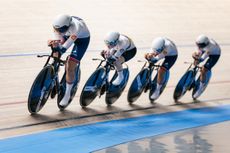 Why hasn't GB sent a full squad to this year's only Track Nations Cup?
Why hasn't GB sent a full squad to this year's only Track Nations Cup?Eight riders will represent GB in Turkey this weekend, with the women's endurance squad left at home
By Tom Davidson Published
-
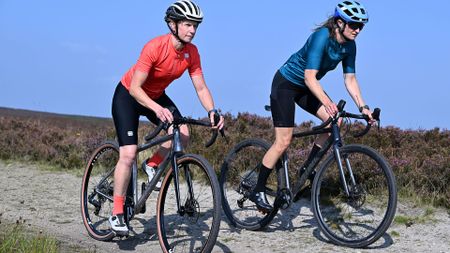 Are chamois pads the only cycling tech that need to be female specific?
Are chamois pads the only cycling tech that need to be female specific?Is female-specific cycling gear little more than a marketing ploy? Or, with the recent rise of unisex kit and components, are women being sidelined by brands eager to save on production costs?
By Nicole Oh Published
-
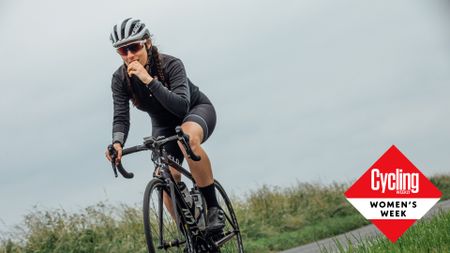 Female-specific nutrition strategies: how to adjust your fuelling at each stage of the menstrual cycle
Female-specific nutrition strategies: how to adjust your fuelling at each stage of the menstrual cycleYour carbohydrate and protein demands vary greatly throughout the month - here’s how to make sure you’re giving your body what it needs
By Andy Turner Published
-
 Strava data shows women restricted by daylight hours for exercise - but female Gen Z Brits prove more active than men
Strava data shows women restricted by daylight hours for exercise - but female Gen Z Brits prove more active than menGlobal data reveals women 8% less likely to exercise outside post-sunset
By Anna Marie Abram Published
-
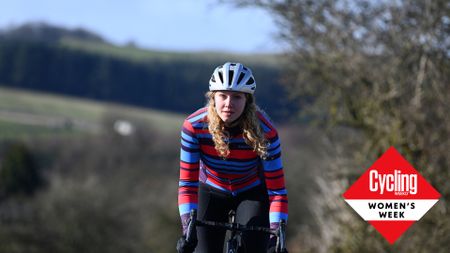 Seven ways ‘traditional’ cycle training approaches don't work for women - and what you can do instead
Seven ways ‘traditional’ cycle training approaches don't work for women - and what you can do insteadFemale physiology demands a different approach to training, nutrition, weight management and recovery – Dr Stacy Sims explains
By Deena Blacking Published
-
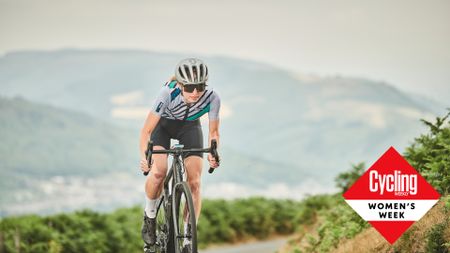 It's 'Women's Week' on Cycling Weekly: your guide to the training, tech and inspirational tales of (and by!) cycling's key women
It's 'Women's Week' on Cycling Weekly: your guide to the training, tech and inspirational tales of (and by!) cycling's key womenWe've got detailed articles on training with the menstrual cycle, a look back at the woman who entered the 1924 edition of the Giro d'Italia, and a dive into 'women-specific geometery' and its relevancy today - plus much, much more!
By Anna Marie Abram Published
-
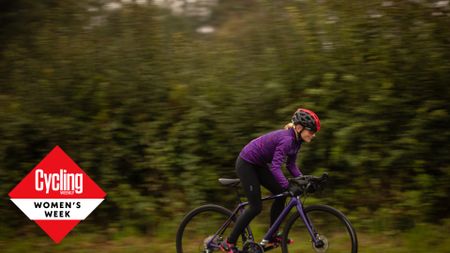 Stock bike setups are often stacked against women and smaller adult cyclists - here’s how to achieve a better fit
Stock bike setups are often stacked against women and smaller adult cyclists - here’s how to achieve a better fitFrom frame size to stance width, crank length to brake levers, here's eight common issues faced by smaller adult cyclists – and a bike fitter’s advice on how to overcome them
By Nicole Oh Last updated
-
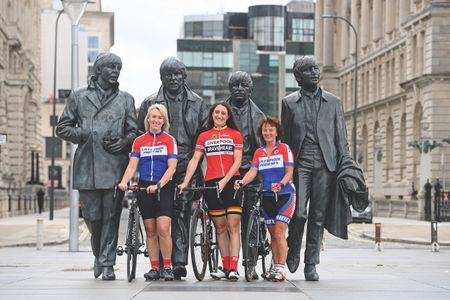 Three's peak: How a trio of veteran women TT racers set a blistering new Three Peaks record
Three's peak: How a trio of veteran women TT racers set a blistering new Three Peaks recordThree women, three peaks, one target: to hike up and down each mountain, cycling from one to the next, in record time. CW finds out how they got on
By David Bradford Last updated
-
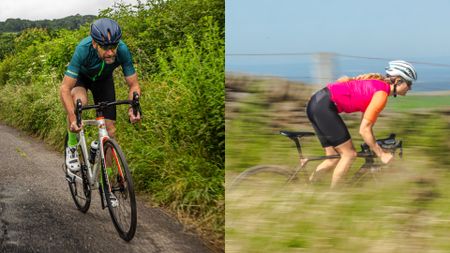 Ideal time of day to exercise differs between active men and women
Ideal time of day to exercise differs between active men and womenDig deep and make it count - new research shows that the optimal time of day to burn fat is not the same across the genders
By Anna Marie Abram Last updated
